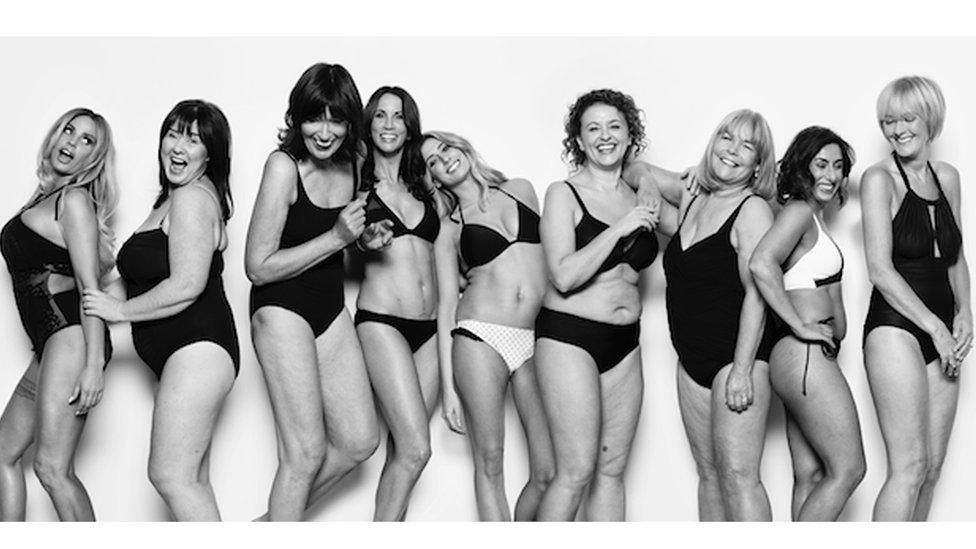Hair loss: What is female-pattern baldness?
- Published
My hair was my "crowning glory", says the TV presenter
For some people it may be the stuff of nightmares, but baldness isn't just a male problem. Loose Women panellist Nadia Sawalha has posted an emotional video talking about losing her hair at the age of 52. But what is female baldness?
The TV presenter admitted her trademark curls were fake and that she was going through the perimenopause, which is the start of the menopause.
She revealed a doctor told her she had the balding gene.
What is the balding gene?
Genetic or pattern hair loss - androgenetic alopecia by its proper name - is the most common cause of hair loss in men and women, explained Iain Sallis, director of the Institute of Trichologists.
It is inherited from one or both parents and can be triggered by hormones at any time after puberty.
Hair is lost at the front, top and the crown of the scalp. The hair loss can vary from thinning to complete baldness.
NHS England estimates that around 50% of women over the age of 65 experience female-pattern baldness.
There are three main things that can cause this type of hair loss: age, inheritance and the hormone testosterone.

Louise French 45, said her hair started thinning in her early 30s. She has since had the affected area covered by a so-called Intralace system - a mesh panel containing human hair which is attached to the scalp for up to 18 months
Hayley Jennings, who set up the Yorkshire Hair Loss Clinic, said the majority of her clients were women - especially mothers - in their 30s and 40s with female pattern hair loss.
"This effects one in four women. I have clients who feel embarrassed and unattractive at a time when they should be feeling their most confident," she said.
What has it got to do with the menopause?
It's all about hormone changes, which women can experience after puberty, pregnancy or menopause.
Dihydrotestosterone (DHT) is the main hormone responsible.
"After menopuase, the oestrogen is no longer in the body to counter the testosterone," said Mr Sallis.
According to the Association of Dermatologists, DHT causes a change in the hair follicles on the scalp. The hairs from those follicles become smaller in diameter, shorter in length and lighter in colour until the follicles stop producing hair all together.
In her video, Sawalha admitted her hair "really started to change" after she had her children.
This post-birth hair loss, Mr Sallis explained, is often experienced three months after birth and is due to shock, a hormone drop and anaemia. The hair often bounces back another three months later, Mr Sallis added.
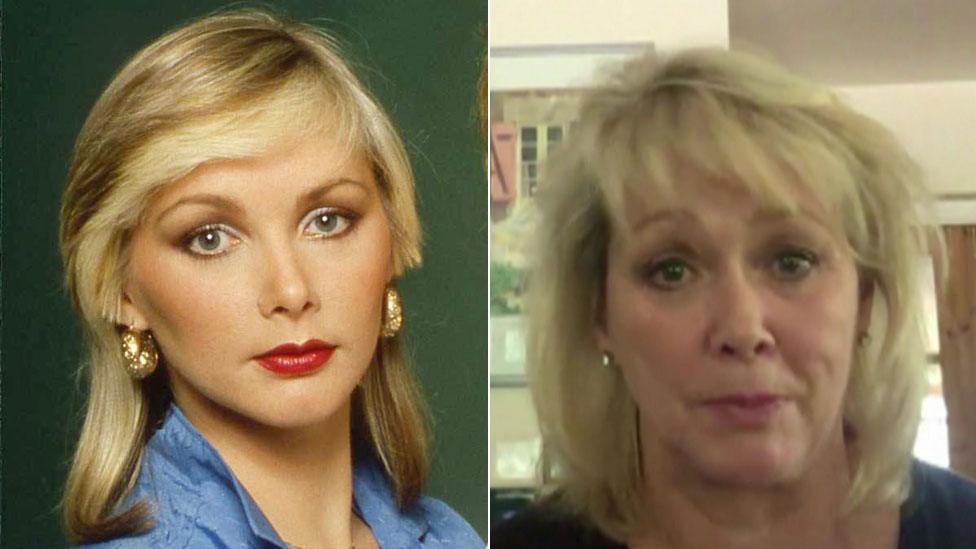
Cheryl Baker - who was in 1980s pop group Bucks Fizz - said she felt ashamed at her hair loss
Former TV presenter and 1980s pop star Cheryl Baker began to lose her hair aged 50 when she hit the menopause. Following the death of her mother, it became worse.
She told the Victoria Derbyshire programme: "You're in disbelief in the beginning. I have shed a lot of tears. It was such a distressing thing to go through.
"I bought hair pieces, wigs and hats and stopped appearing in public because I felt ashamed of myself."
Living with hair loss
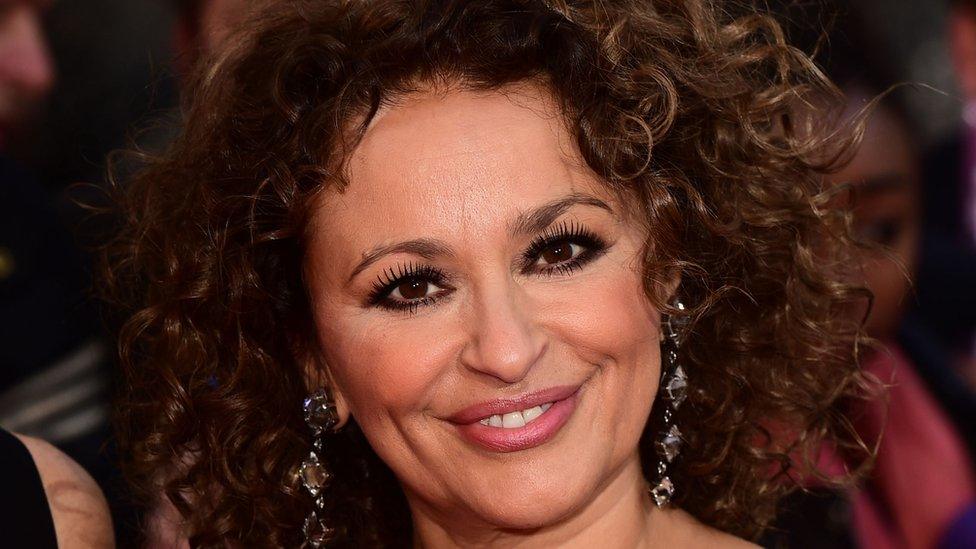
Sawalha said her hair changed after she had children
Sawalha said she sounded "absolutely pathetic" for being so upset, but the public response she has received suggests otherwise. Hundreds have since commented on her Facebook video, praising the TV star for her bravery.
"The psychological impact of hair loss is huge," said Mr Sallis.
One of those who could relate to the video was Catherine Adams, 67, from Southend-on-Sea, who has Alopecia Totalis, which affects her whole body. She lost her hair suddenly aged 20.
'Sense of humour'
"It completely destroys your confidence. You think people are looking at you - you feel a bit freaky," she said.
Some hair grew back when Catherine was pregnant, but she later lost it again.
"You miss out on things - hair is so important for women," she explained. "I've been reluctant to go away with friends or do some activities even now, in case they see me without the wig. So I'm still very self conscious."
Compared to when she was younger, Catherine said it was "easier now", with more people talking openly about it and better support now available.
Her advice is stay positive.
"It's with you all the time. I've realised it's never going to grow back, I still get upset. You've got to go with it and have a sense of humour about it."
What can you do about it?
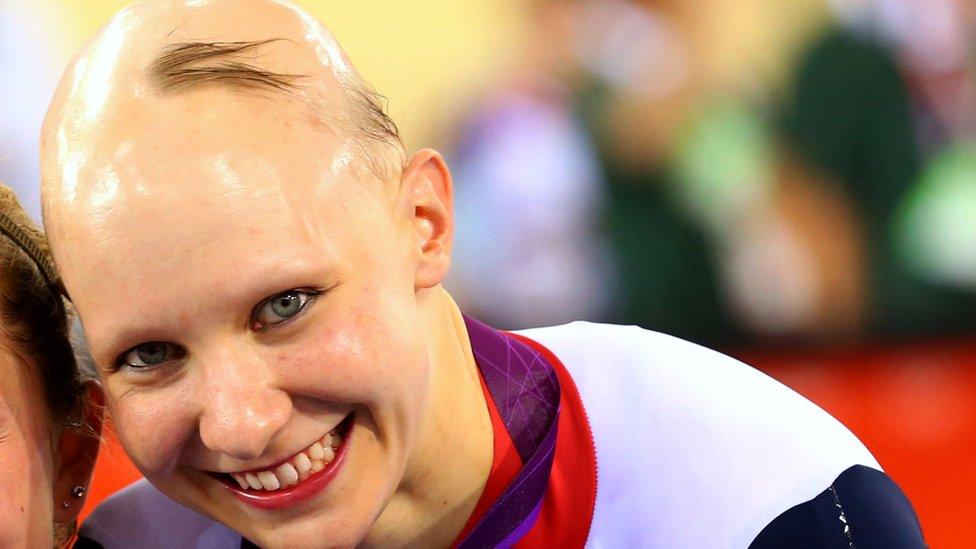
After winning Olympic gold, Joanna Rowsell pulled off her helmet to proudly reveal her bald head. The cyclist was diagnosed with alopecia aged 10
There is no cure to genetic hair loss, but as there are lots of other issues that can contribute to hair loss, Mr Sallis said said there was "no reason for women to suffer in silence"
Minoxidil is a widely available treatment for female-pattern baldness. The lotion formula - which is rubbed onto the scalp - may stop hair loss or encourage hair growth
Wigs - synthetic and real hair - can range from £60 to thousands of pounds. Alopecia sufferer Catherine, who said she's "never been brave enough to go without a wig" said her brown wig provides one of the only perks of her hair loss as it makes her look younger
Hair transplants are costly - time and money - and see hairs grafted from one area onto a bald area
Alopecia UK have support groups across the UK, external
- Published29 September 2016

- Published31 May 2017
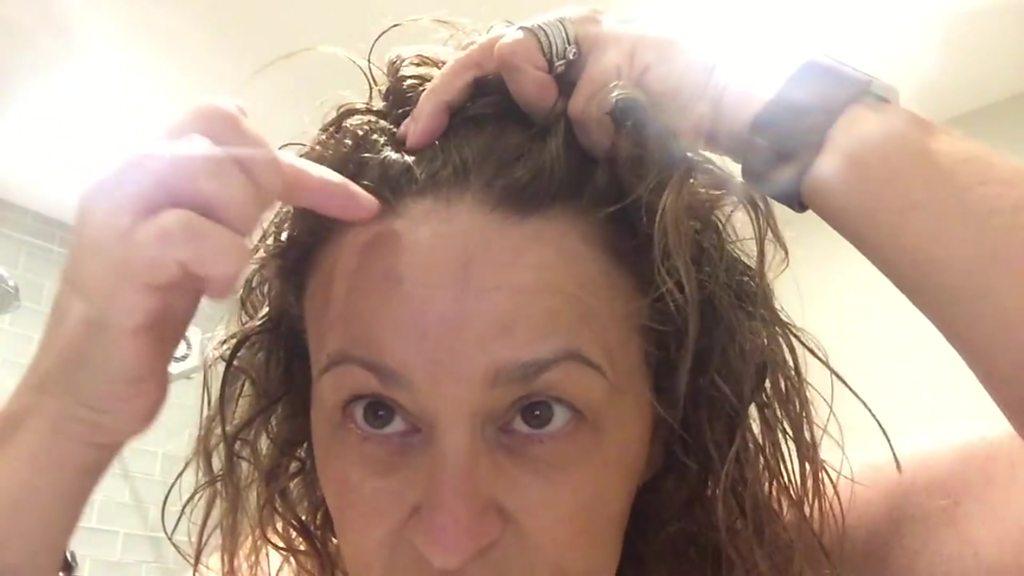
- Published1 May 2017
